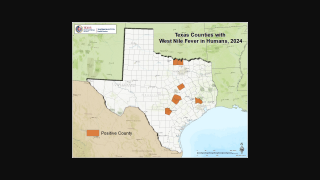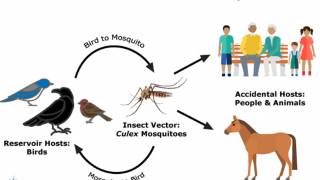West Nile Virus Became Permanent Arizona Resident in 2018

A potentially deadly infection spread by mosquitoes has become a permanent resident of Arizona, according to a new study by Northern Arizona University (NAU).
These researchers believe Arizona is now a likely permanent source of West Nile Virus (WNV) infection.
In an effort to better understand the dynamics of West Nile Virus (WNV) circulation in the Phoenix metropolitan area of Maricopa County, Arizona, this first-of-its-kind study, Phylogenetic analysis of West Nile Virus in Maricopa County, Arizona: Evidence for dynamic behavior of strains in two major lineages in the American Southwest sequenced 14 genomes and evaluated them within a nationwide context to estimate the following items:
- when WNV was first introduced into Maricopa County, AZ
- how many distinct WNV introductions have occurred
- if contemporary strains belong to lineages that have become endemic in Maricopa County
- the temporal span of such establishment
Crystal Hepp, an assistant professor at NAU’s School of Informatics, Computing, and Cyber Systems, is the lead author on the study, used advanced algorithms to develop a theoretical model of how the virus moves around the American Southwest.
The NAU study results suggest Arizona’s moderate temperatures allow the WNV to ‘over-winter’ in populations of mosquitoes and birds.
In fact, using this sophisticated genomic analysis, researchers identified two dominant strains of WNV — NA/WN02, and SW/WN03 — which have circulated in Maricopa County for approximately 4 and 7 years, respectively.
WNV is the leading cause (96%) of mosquito-borne disease in the continental United States, was identified in America in New York in 1999.
Specific WNV strains were identified using a relatively new protocol called whole genome tiled amplicon sequencing. A version of this protocol was first used to sequence the Zika virus.
“The protocol we created for this study can now be incorporated into routine public health surveillance activities, allowing for better tracking of local viral hotspots, changes in local viral populations and detection of the emergence of new strains of WNV,” Hepp said.
“We are currently conducting WNV surveillance across western states to better understand how permanent Arizona viral populations may be a source for continual reintroductions to other regions and other states.”
WNV is usually active in the summer and fall, dissipating when temperatures reach freezing, something that rarely happens in Maricopa County.
Throughout the USA, WNV cases spiked during September 2018.
There are no vaccines to prevent or medications to treat WNV, says the U.S. Centers for Disease Control and Prevention (CDC).
There is potentially some good news on the horizon regarding a WNV vaccine.
An experimental vaccine candidate HydroVax-001 is in an active phase 1 clinical trial, which means it is many years away from receiving FDA approval.
As of January 8, 2019, a total of 49 states and the District of Columbia have reported West Nile virus infections in people, birds, or mosquitoes in 2018.
Overall, 2,544 cases of West Nile virus disease in people have been reported to CDC.
Of these, 1,594 (63%) were classified as neuroinvasive disease (such as meningitis or encephalitis) and 950 (37%) were classified as non-neuroinvasive disease.
The state of Texas reported over 120 WNV cases during 2018.
The CDC recommends reducing the risk of WNV by using insect repellent and wearing long-sleeved shirts and long pants to prevent mosquito bites.
The Pathogen and Microbiome Institute at NAU contributed to this study. And, the Arizona Technology Research and Initiative Fund and the Arizona Biomedical Research Centre provided funding for this study.
Our Trust Standards: Medical Advisory Committee


























